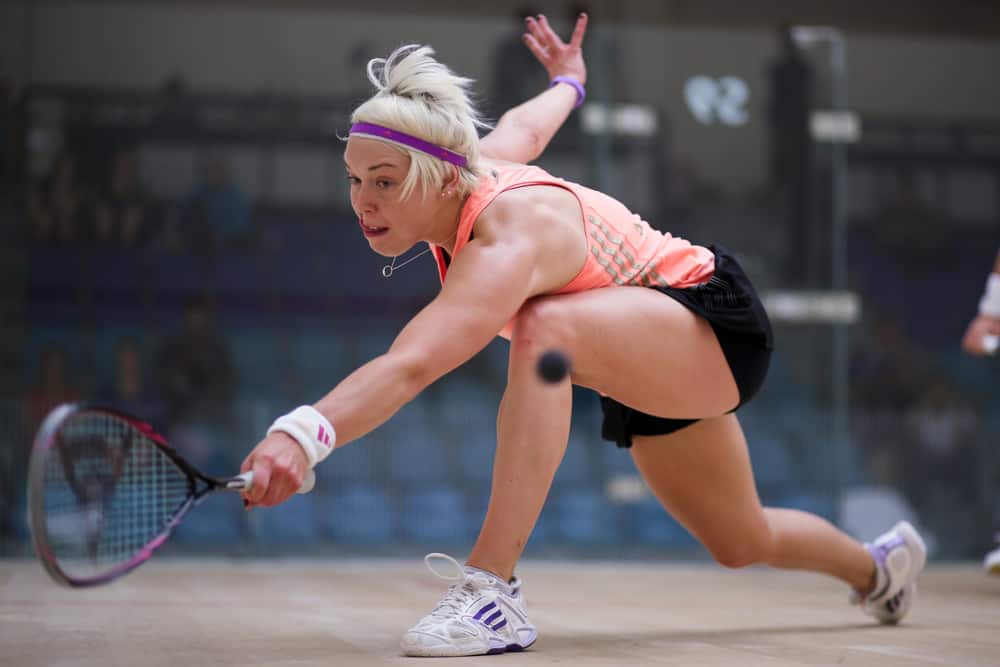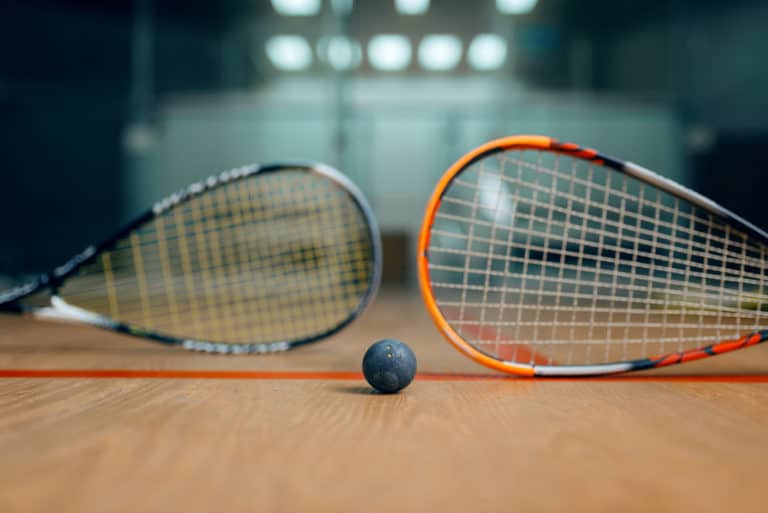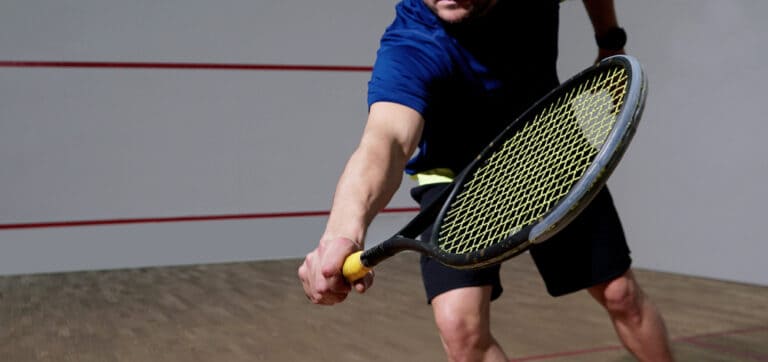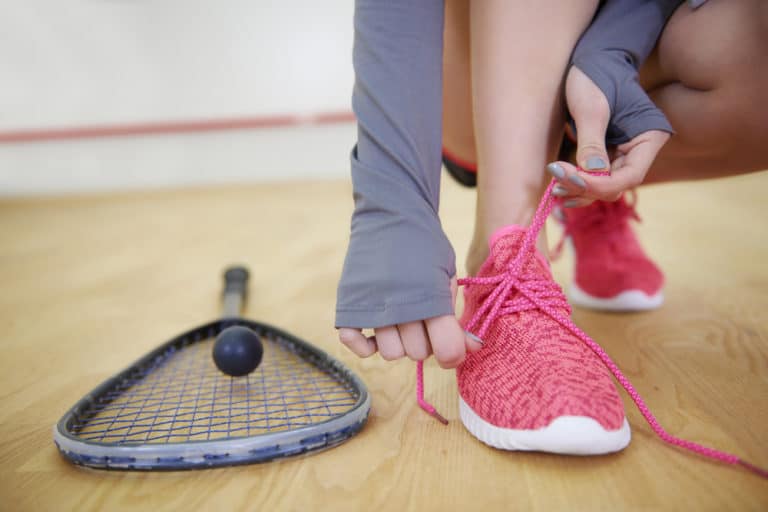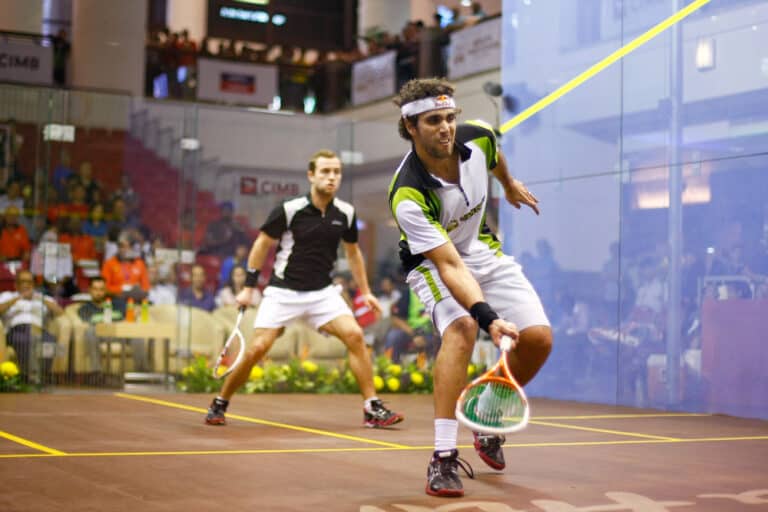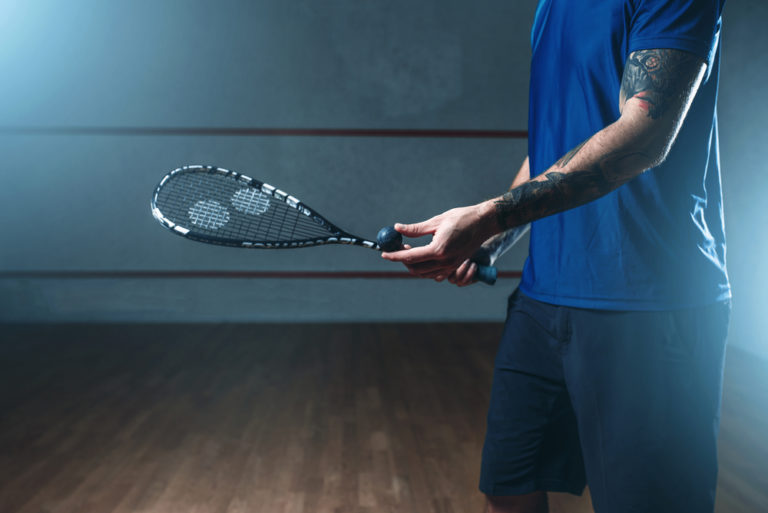Which Muscles Does Squash Work?
Are you wondering which muscles get a workout while playing squash? If you’ve ever watched a squash game, you’ll know that the players are often red-faced and huffing by the time they get off the court. So clearly, squash is good exercise. But which muscles do squash work?
You’ll work most major muscle groups while playing squash, including the upper-body, lower-body, core, and back muscles. Squash also targets your wrist extensors and flexors, especially for the arm in which you hold the racket. Squash is considered a full-body workout with many benefits.
If you’re looking for a fun, accessible sport that ensures a proper workout and tones and defines your muscles, look no further than squash! Today, we’ll cover the exact muscles worked when playing squash and how to warm up before the game to prevent injuries.
What Muscles Do You Work When Playing Squash?
Squash is not the most popular racket sport, but it is still enjoyed by many. Those who try squash for the first time always seem to remark on what an excellent workout it is. An intense squash game sends your heart rate up and works plenty of muscles, some you didn’t even know you had.
In truth, squash is a full-body workout, as it targets the upper and lower-body muscles. Squash also engages the core muscles and back stabilizers. What’s more, squash promotes stronger wrists seeing as you use your wrist to hit the ball. These are the primary muscles used when playing squash:
- Pectorals
- Deltoids
- Biceps
- Triceps
- Girdle (trapezius, levator scapulae, rhomboid, serratus anterior, pectoralis minor)
- Glutes
- Hamstrings
- Quadriceps
- Calves
- Obliques
- Spinal erectors
- Wrist extensors and flexors
As you can see, this is an impressive number of muscles worked during one activity. Why are so many muscles used, you may wonder. Well, the muscles in the upper body are mainly engaged when turning and hitting the ball, while the lower-body muscles are used when running and stopping on the court.
Your core muscles and back stabilizers support your body while turning, bending, and stretching for the ball. And, of course, your wrist extensors and flexors work when you use the racket to hit the ball.
Considering all the muscles that are worked in a single game of squash, it’s no wonder squash is considered a full-body workout. But is squash a form of cardiovascular training, or is it considered resistance training?
Is Squash Cardio Or Resistance Training?
Squash may be a full-body workout, but it is still mostly regarded as cardiovascular training. This is because your heart rate can spike up to 199 beats per minute, which is well within the cardiovascular training region. For an exercise to be considered cardiovascular training, your heart rate must be between 70% and 80% of its maximum while performing the exercise.
To determine your maximum heart rate, you must subtract your age from 220. For example, if you’re 25, your maximum heart rate is 195. Therefore, the activity must have your heart rate at 136 to 156 beats per minute for cardiovascular training.
An intense game of squash usually has your heart rate well above the minimum required for cardiovascular training. Therefore, squash is undoubtedly considered cardio. But squash doesn’t only give you cardiovascular training. It also tones and defines all the muscles we’ve mentioned before.
While squash may not cause those muscles to grow as big as you could grow them by doing strength training in the gym, the muscles and muscle groups are still targeted and will become stronger and more defined.
You’ll also lose weight and excess fat while playing squash, which further helps to define and tone the muscles build during the sport. These are some of the health benefits of playing squash. But the biggest health benefit is the joy and stress release most people get while playing.
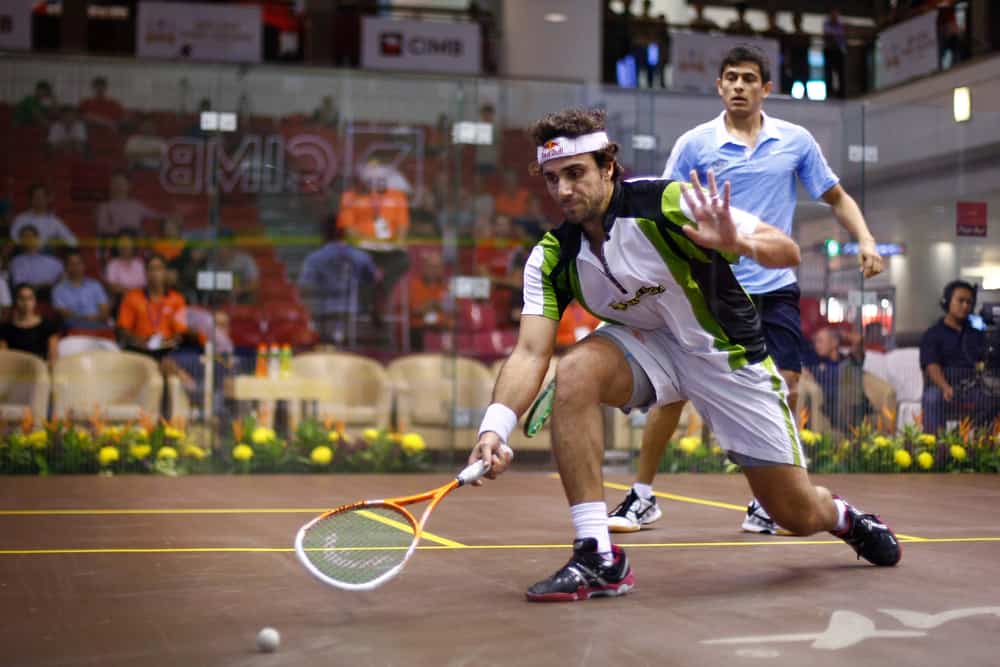
How To Warm Up Before Playing Squash
Since squash works as many muscles as it does and ensures a thorough workout, you can imagine doing some warmup and cooldown exercises before and after playing. Indeed, these exercises are crucial if you wish to prevent getting injured while playing squash.
Before starting to play, you must first get your muscles warm and stretched. You must also do a warmup drill by hitting the squash ball against the wall to get your eye in and warm your wrist up. It also prepares your body for the exercise ahead.
When you arrive at the squash courts, you must first warm up your muscles. You can do this by taking an easy jog around the court, running in one place, or doing star jumps. Then, when you feel warm and loose, you must follow the warmup with dynamic stretching.
It is crucial that you do dynamic stretches before a squash game instead of static stretches. As your muscles aren’t as warm or supple before doing a workout, you can easily overstretch or injure them by doing static stretches. Dynamic stretches include lunges with twists, pushups, windmills, arm swings, and more.
After the dynamic stretching, you can prepare for the squash game by getting your eye in. This means hitting the squash ball against the wall and returning it so your eye starts to focus on the ball and you are prepared for the game. You are now ready to play squash.
You must also do some cooldown exercises when you have finished your squash game. Here, you can include static stretches to help prevent muscle stiffness and ensure your body is warm and loose after playing.
Common Squash Injuries
As with any sport, squash is not without its injuries. Although you can prevent many typical squash injuries by doing the warmup exercises mentioned above, you should be aware of the possible risks when playing squash. One of the most significant risks is getting hit in the face with the squash ball.
The squash ball comes at you with incredible speed and force and can cause eye damage if you get hit on the eye with it. Therefore, many squash clubs require that their members wear protective eye goggles when playing to reduce the chances of sustaining eye damage. Other common squash injuries include:
- Muscle strain
- Sprains (ankles and wrist)
- Bruises
- Muscle soreness
- Concussions
- Broken bones
Concussions and broken bones mainly occur when players make contact with each other or when they slip and hit the floor or walls. In rare cases, squash players also suffer heart attacks if they push their bodies beyond their maximum heart rates.
Fortunately, most common squash injuries are treatable with rest and rehabilitation. Squash injuries aren’t all too common. You can prevent the most common squash injuries by preparing before the game and doing proper warmup exercises.
Squash isn’t too dangerous a sport, and people of all ages can participate in it. The biggest concern is getting hit with the squash ball, so wearing protective eye goggles is a great idea.
Conclusion
Squash works many muscles in the upper and lower body. Squash also targets the core muscles, back stabilizers, wrist flexors, and extensors. Squash is an excellent form of cardiovascular training and can tone and define your muscles.

